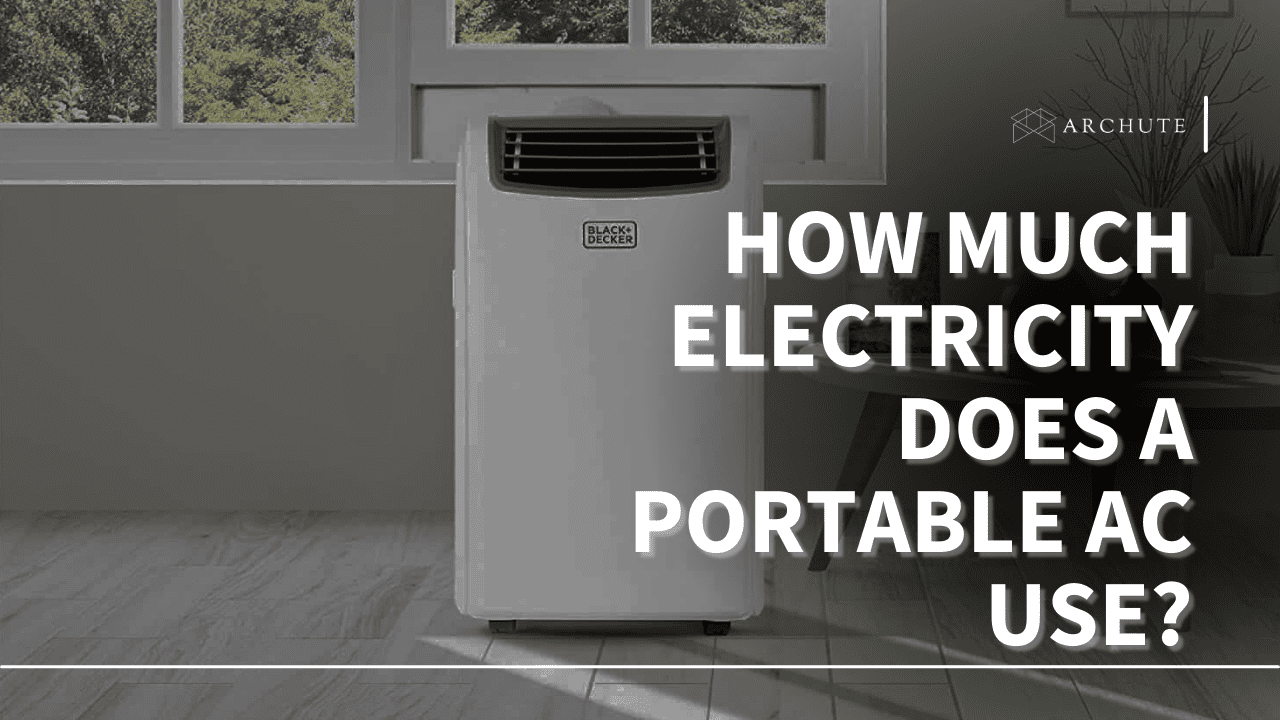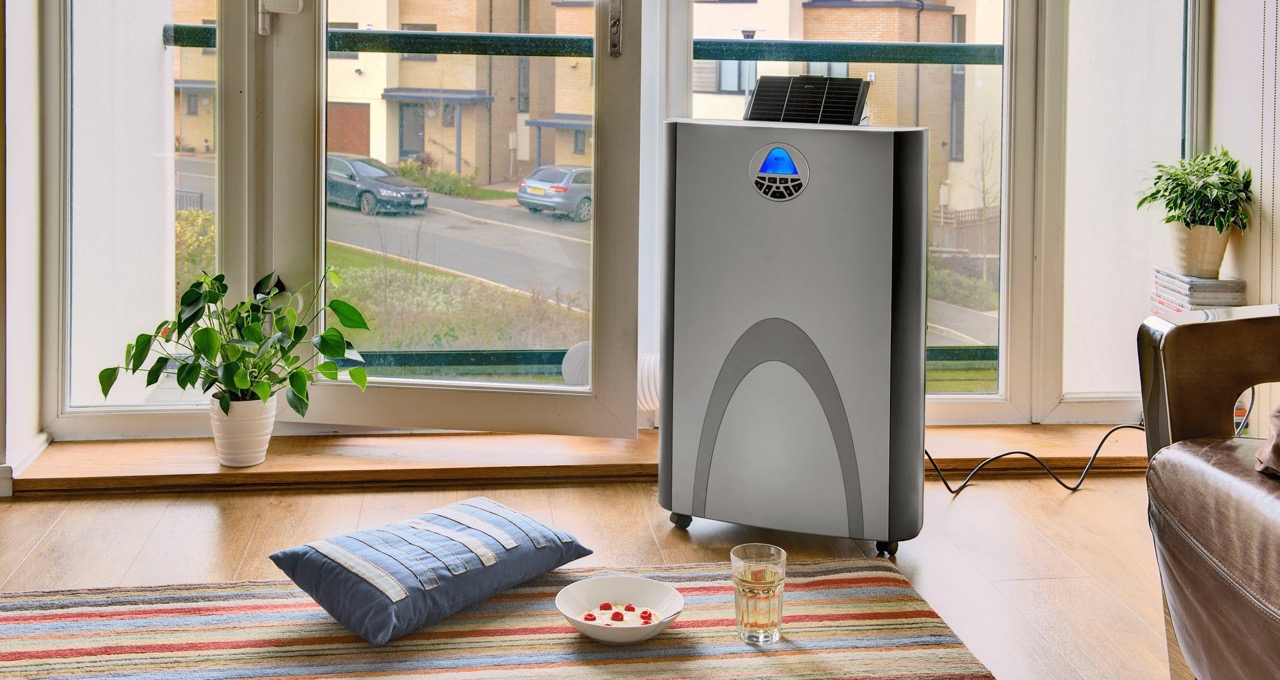How Much Energy Do Portable Air Conditioners Use

Summer's heat often brings the inevitable rise in energy bills. For many, a portable air conditioner (AC) offers a flexible cooling solution, but the question remains: how much energy do these units actually use? Understanding the energy consumption of portable ACs is crucial for homeowners, businesses, and anyone looking to minimize their environmental footprint and maximize savings.
Understanding Portable AC Energy Consumption: The Basics
Portable air conditioners, unlike their window or central AC counterparts, are self-contained units that cool a single room or area. Their energy consumption is typically measured in watts. A higher wattage indicates greater energy use and potentially higher electricity costs. Several factors influence how much energy your portable AC consumes:
- BTU (British Thermal Units): BTU measures the cooling capacity of an AC. A higher BTU rating means the unit can cool a larger space, but it also generally consumes more energy. Common portable AC BTU ratings range from 8,000 to 14,000 BTU.
- EER (Energy Efficiency Ratio): EER is a crucial metric that indicates how efficiently the AC converts electricity into cooling. It's calculated by dividing the BTU rating by the power consumption in watts. A higher EER signifies better energy efficiency. Look for portable ACs with an EER of 10 or higher.
- Unit Size and Type: Single-hose models are generally less efficient than dual-hose models. Single-hose units draw air from inside the room to cool the condenser, creating negative pressure and drawing in warm air from outside. Dual-hose units draw air from outside for condenser cooling, making them more efficient.
- Usage Habits: How often and how intensely you use the AC significantly impacts its energy consumption. Running it constantly at a low temperature will consume more energy than using it sparingly or setting it to a higher, more reasonable temperature.
Calculating Your Portable AC's Energy Costs
To estimate the energy cost of running your portable AC, you'll need to gather some information:
- Power Consumption (Watts): This is usually found on the unit's label or in the product manual.
- Hours of Use per Day: Estimate how many hours you run the AC each day.
- Electricity Rate (Dollars per Kilowatt-Hour - kWh): Check your electricity bill to find your current rate.
Here's the formula to calculate daily energy consumption and cost:
(Wattage / 1000) x Hours of Use = Daily kWh Consumption
Daily kWh Consumption x Electricity Rate = Daily Cost
For example, let's say you have a 1200-watt portable AC, you run it for 6 hours a day, and your electricity rate is $0.15 per kWh:
(1200 / 1000) x 6 = 7.2 kWh
7.2 kWh x $0.15 = $1.08 per day
Therefore, running this portable AC for 6 hours daily would cost approximately $1.08. Over a month, this would add up to around $32.40.
Portable AC vs. Other Cooling Options: A Comparison
Comparing the energy consumption of portable ACs to other cooling methods helps you make informed decisions about your cooling strategy.
- Window AC Units: Generally, window AC units are more energy-efficient than portable ACs because they vent heat directly outside without the hose inefficiency. However, installation can be more complex.
- Central AC: Central AC systems are the most efficient for cooling an entire home, but they also have the highest upfront cost. They use significantly more energy than a single portable AC but distribute cooling throughout the house.
- Fans: Fans use a fraction of the energy compared to ACs. While they don't actually cool the air, they circulate it, creating a cooling effect. They are an excellent option for mild weather or to supplement AC use.
A typical window AC (8,000 BTU) might consume around 700 watts, while a central AC system could use 3,500 watts or more. This highlights the importance of considering your specific cooling needs and choosing the most efficient option for the space you need to cool.
Energy-Saving Tips for Portable AC Users
Even with a portable AC, there are several ways to minimize energy consumption and lower your bills:
- Choose the Right Size: Don't buy an oversized AC for a small room. Use a BTU calculator to determine the appropriate size for your space.
- Seal the Room: Close windows and doors to prevent warm air from entering the room. Use weather stripping and caulk to seal any gaps.
- Use a Programmable Timer: Set the AC to turn on and off at specific times to avoid running it when it's not needed.
- Maintain Your AC: Regularly clean the filters to ensure efficient airflow. Dirty filters can restrict airflow and increase energy consumption.
- Utilize Ceiling Fans: Ceiling fans can help circulate cool air and reduce the need for the AC to run constantly.
- Position Strategically: Place the AC in a location where it won't be obstructed by furniture or curtains.
- Consider a Dual-Hose Model: If feasible, upgrade to a dual-hose model for improved efficiency.
- Set the Thermostat Wisely: Avoid setting the thermostat too low. Every degree lower increases energy consumption.
The Role of Smart Technology and Energy Efficiency
Integrating smart technology with your portable AC can further enhance energy efficiency. Smart thermostats and sensors can automate temperature control and optimize energy usage.
- Smart Thermostats: These devices learn your cooling preferences and adjust the temperature automatically. They can also be controlled remotely via a smartphone app.
- Smart Sensors: Sensors can detect occupancy and adjust the AC accordingly. For example, if a room is unoccupied, the AC can automatically switch to a lower setting or turn off completely.
- Energy Monitoring Systems: These systems track your energy consumption in real-time, providing valuable insights into your usage patterns.
Many portable ACs are now equipped with Wi-Fi connectivity, allowing them to be controlled via smartphone apps and integrated with smart home ecosystems like Amazon Alexa or Google Assistant. These integrations allow for precise control and automation, leading to significant energy savings.
Energy Star Certification and Government Rebates
When shopping for a portable AC, look for the Energy Star label. Energy Star certified models meet strict energy efficiency guidelines set by the U.S. Environmental Protection Agency (EPA). These models typically use 10-15% less energy than standard models.
In addition to Energy Star certification, many states and utility companies offer rebates and incentives for purchasing energy-efficient appliances, including portable ACs. Check with your local utility company and state energy office to see what rebates are available in your area. These rebates can help offset the upfront cost of a more efficient unit and provide long-term savings on your energy bills.
ROI and Long-Term Savings
Investing in an energy-efficient portable AC, even if it has a higher upfront cost, can provide a significant return on investment (ROI) over time. The savings on your energy bills will eventually outweigh the initial investment. Consider the following:
- Reduced Energy Bills: An Energy Star certified portable AC can save you hundreds of dollars over its lifespan.
- Increased Home Value: Energy-efficient appliances can increase the value of your home.
- Environmental Benefits: By reducing your energy consumption, you're also reducing your carbon footprint and contributing to a more sustainable future.
Before purchasing a portable AC, research the EER rating and estimated annual energy consumption. Compare different models and factor in the cost of electricity in your area to determine the most cost-effective option for your needs.
Conclusion
Understanding the energy consumption of portable air conditioners is essential for making informed decisions that save you money and reduce your environmental impact. By choosing an energy-efficient model, implementing energy-saving strategies, and leveraging smart technology, you can enjoy the convenience of portable cooling without breaking the bank. Remember to look for the Energy Star label and explore available rebates to maximize your savings. Making smart choices about your cooling solutions is a win-win for your wallet and the planet.










